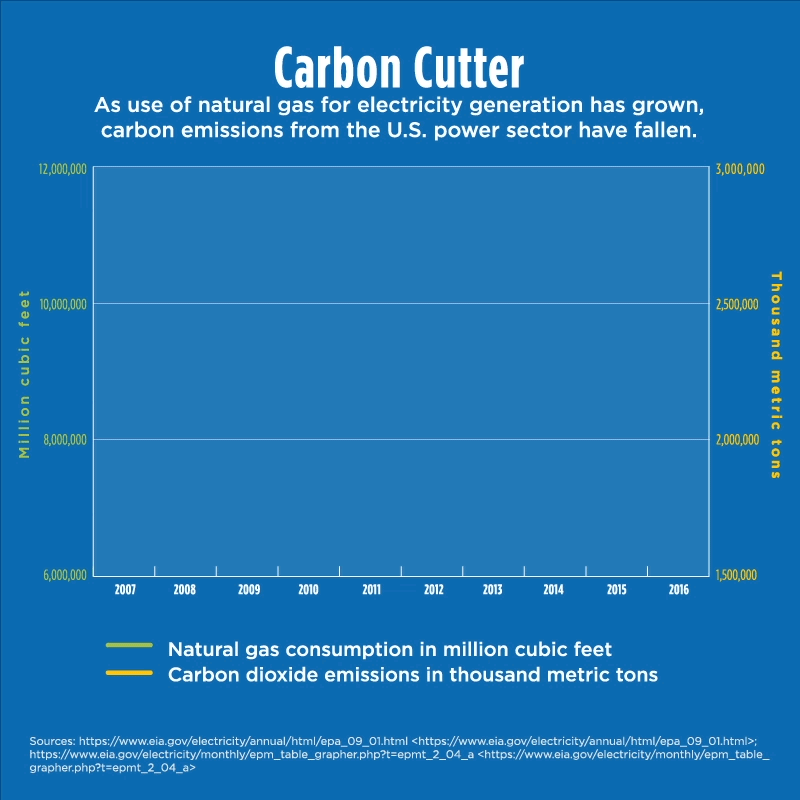More Natural Gas. Fewer CO2 Emissions.
Why does natural gas emit less CO2?
Natural gas is a clean burning energy source and the reason boils down to chemistry. When fossil fuels are burned, oxygen combines with carbon to form carbon dioxide (CO2), and with hydrogen to form water (H2O). These chemical reactions create the heat we use for energy. The amount of CO2 released into the atmosphere during this process depends on how much carbon the fuel source has – more carbon produces more CO2. Natural gas has a high hydrogen content and a low carbon content, consisting of four hydrogen atoms and only one carbon atom. The result? For the same amount of energy produced, burning natural gas emits significantly less CO2 into the air than other fossil fuels.
What are the Benefits of Fewer CO2 Emissions?
Natural gas has become the nation’s largest fuel source for electricity generation, providing more than 31 percent of U.S. electricity in 2017. Yet even as natural gas continues to increase its share of the electricity grid, CO2 emissions are steadily dropping. Since 2000, CO2 emissions from power generation have fallen 21 percent – their lowest levels in nearly 30 years. By 2030, CO2 emissions from power generation are expected to drop by as much as 30 percent from 2005 levels because of the increasing shift to natural gas.
This reduction of CO2 emissions benefits communities and the environment, while propelling the U.S. toward climate progress. In 2016 alone, the shift to natural gas prevented 383 million metric tons of carbon dioxide from being emitted into the atmosphere. That’s the equivalent of taking more than 81 million typical passenger vehicles off the road for a year. Establishing a clean energy mix will help to protect the environment and natural gas is an essential piece of the puzzle.

How is the Market Mandating Clean Energy?
The increased use of natural gas for electricity generation isn’t just better for the environment, it’s also lowering energy costs for businesses and consumers. The surge in domestic natural gas production – up 50 percent between 2005 and 2016 – created a supply large enough to win the marketplace. For the first time, clean energy, abundant energy, and affordable energy are not mutually exclusive.
This unique approach to market-driven clean energy has enabled the U.S. to become a global model for climate action. But this progress didn’t happen overnight. Clean and affordable natural gas stems from years of industry innovation. From 2000 to 2014, the natural gas and oil industry invested $90 billion in technology to reduce greenhouse gases.
For decades, the country has grappled with how to produce the amount of energy we need to live comfortably and support the U.S. economy while also protecting the environment. Technology has changed the game and the market has responded. Affordable, abundant natural gas is lowering CO2 emissions and helping us work toward a sustainable future.
